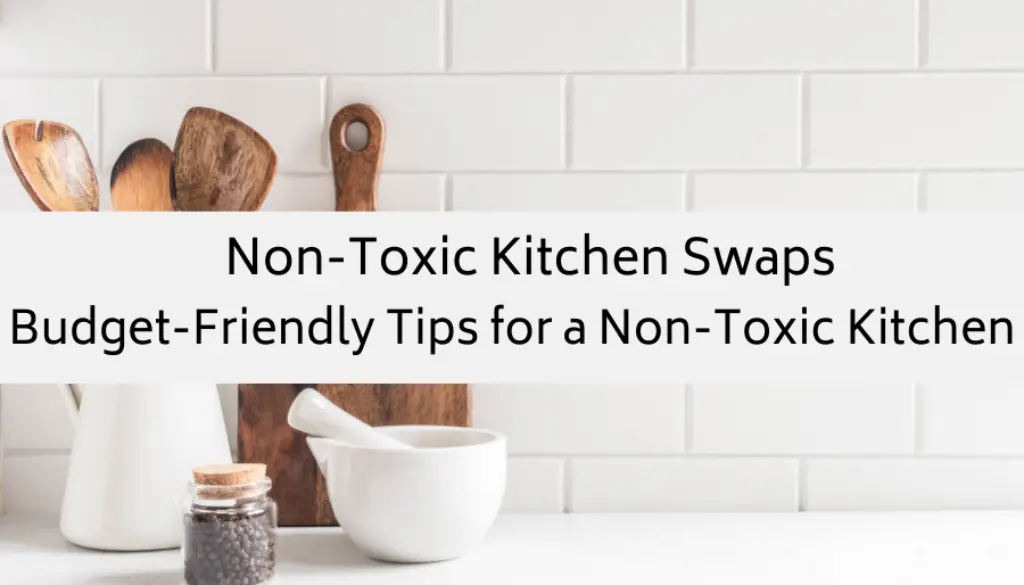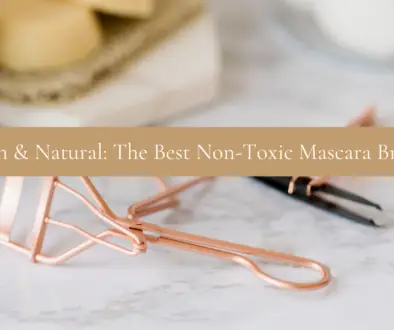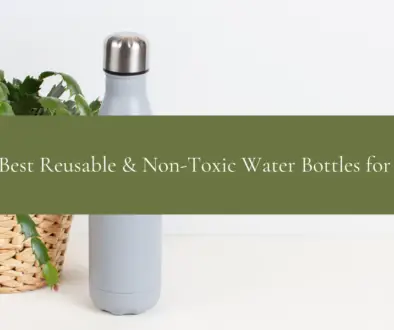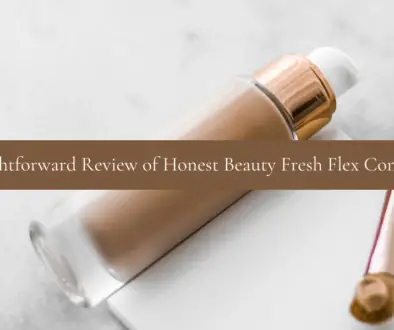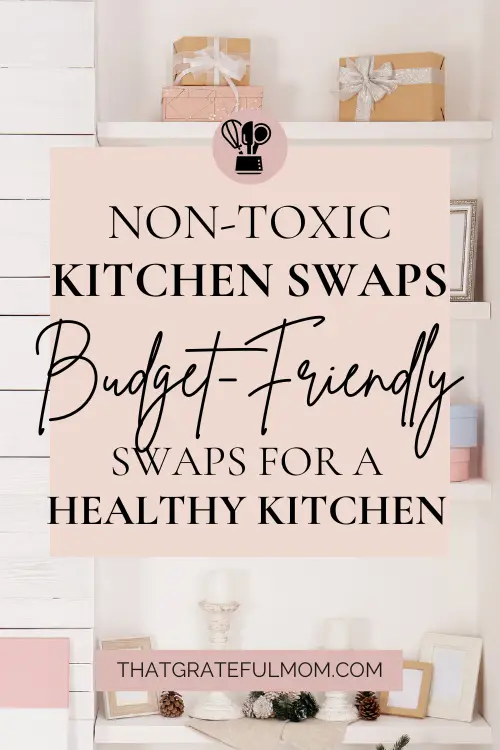
Non-toxic Kitchen Swaps
Swaps you can make on a budget to reduce your exposure to toxic chemicals.
Maintaining a healthy lifestyle extends beyond just what we eat; it’s also about creating a non-toxic environment in our homes, starting with the heart of our households – the kitchen. Making conscious choices and opting for non-toxic kitchen swaps can significantly reduce our exposure to harmful chemicals. In today’s post, we’ll explore practical and budget-friendly alternatives that allow you to embrace a healthier culinary space.
This post is a special one for me. Cooking and baking have always been therapeutic for me, but since my son’s cancer diagnosis, I have worked hard to clean up the products we use and the foods we choose to cook and eat. I was initially overwhelmed, learning what products are safe, what to avoid, and how to enjoy cooking without fear. I am so excited to share what I’ve learned with you today and help encourage you on your non-toxic journey!
If you’re on a low-tox journey and looking for more advice or encouragement, check out some of my other posts below:
Budget-friendly, non-toxic cleaning swaps
7 Young Living products worth the hype
If you’re new to my blog, welcome! I am so glad you found my site. I share about motherhood, our son’s cancer story, and the non-toxic swaps we’ve made to reduce our exposure to harmful chemicals. Thank you so much for being here!
Now, let’s dive in! Here are some non-toxic kitchen swaps you can make to reduce your exposure to toxic chemicals.
The importance of non-toxic kitchen swaps
Creating a safe and non-toxic kitchen environment is crucial for promoting overall well-being. By making informed choices, you can minimize the risks associated with exposure to harmful chemicals, ensuring that your family enjoys healthier meals and a safer living space. Remember that it’s okay to make one change at a time. Don’t feel like you need to change everything in your kitchen simultaneously. Choose one product at a time. Maybe it’s cooking utensils, bakeware, cookware, or food storage. Remember to focus on that first and let go of the rest for now. Don’t lay down your peace because you can’t immediately change everything in your home.
Non-toxic cookware and food storage

Investing in non-toxic cookware and food storage options can significantly reduce the potential for chemical leaching into your meals. Consider the following swaps:
- Non-Toxic Cookware: Replace traditional non-stick pans with ceramic, cast iron, or stainless-steel cookware. These alternatives are durable, versatile, and free from the potentially harmful chemicals found in non-stick coatings. There is a bit of a learning curve with stainless steel to ensure your food doesn’t stick, but once you know how to prime your pan, you’ll never have to worry about food sticking again.
My favorite brand is Cuisinart. Their lifetime guarantee on all their cookware makes the price unbeatable. This is the set I purchased.
- Non-toxic Bakeware: Instead of nonstick items, use products like ceramic or stainless steel, and line them with unbleached parchment paper to avoid foods from sticking. I know the ease of nonstick products is nice, but it’s not worth the health risk when the chemicals in those non-stick items leech into your foods.
These are a few of my favorite products that we have purchased over time to help reduce our exposure:
Pyrex glass casserole dish– Great for cooking and storing leftovers all in one.
Glass mixing bowls- Mix, serve, and store food in these dishes.
Stainless steel cookie sheets– Lining with unbleached parchment paper will help ensure foods won’t stick to the pan.
Stainless steel muffin tins– These have held up for years and look as great as they did the day I bought them. Very happy with my purchase.
Glass bread pans- I love these for all my bread recipes. They make the perfect-sized loaves for sandwiches and are very easy to clean!
Silicone cooking utensils- When stainless steel isn’t an option, silicone is a safer alternative to plastic. I prefer to use metal, but we use this set instead to avoid scratching. Wood is also a safe option if you care for it and keep it well-sealed.
- Glass Food Storage Containers: Swap out plastic containers for glass alternatives. Glass is non-reactive and won’t leach chemicals into your food, ensuring your leftovers remain safe and fresh. Another great option, if glass is unappealing, is stainless steel. They are not microwave-safe but lightweight, and many can keep your food warm.
Here are a few sets available on Amazon:
Stainless steel option- NOT MICROWAVE SAFE
Natural cleaning solutions for a non-toxic kitchen

Maintaining a clean kitchen is essential, but many commercial cleaning products contain harsh chemicals that can linger in the air and on surfaces. I’ve discussed this before in previous posts, but I now make almost all my cleaning products and laundry detergent. Opt for these non-toxic cleaning swaps:
- DIY All-Purpose Cleaner: Create your own cleaning solution using ingredients like white vinegar, baking soda, and essential oils. Not only are these options safer, but they’re also more budget-friendly. If you’re interested in learning how to make your own window cleaner, all-purpose spray, laundry detergent, and floor cleaners, check out my posts here:
Non-toxic cleaners for a safer home
Easy homemade laundry detergent
- Microfiber Cloths: Replace disposable paper towels with reusable microfiber cloths. Not only will they save you money, but they also effectively trap dirt and grime without the need for chemical-laden cleaning agents. When we realized how much money we spent on paper towels, switching to microfiber cloths made perfect sense. I get mine on Amazon and replace them maybe once a year. This is my favorite brand.
Non-Toxic Food Preparation
How we prepare and handle food can also impact our exposure to chemicals. Like bakeware and cookware, hidden chemicals in food preparation are everywhere. Consider these non-toxic kitchen swaps:
- Natural Cutting Boards: Choose cutting boards made from bamboo or hardwood. Unlike plastic boards, they don’t harbor harmful bacteria or release chemicals when in contact with sharp knives.
- Silicone Baking Mats: Instead of using bleached parchment paper or aluminum foil, use silicone baking mats. They’re non-toxic, reusable, and provide a non-stick surface for your baked goods.
- Unbleached Parchment Paper: A safer alternative to bleached parchment paper, unbleached parchment paper still offers a nonstick surface without the chemicals.
Food Choices Matter
When making changes as part of your non-toxic kitchen swaps, one thing to consider is organic vs. conventional foods. I know for many families, inflation has caused a serious strain on our budgets. We are included in that, too. Food is more expensive than ever, the cost of living is higher, and salaries have not increased to compete with the growing cost of surviving in this country. If choosing organic foods isn’t possible right now, that’s okay! You are doing your best to keep your family fed, and that matters more than anything else. We work hard to prioritize purchasing organic foods when possible, but that isn’t always feasible. When there is room in the budget, here are items we try to make sure are always organic:
Firstly, we start by familiarizing ourselves with the Dirty Dozen and Clean Fifteen lists from EWG. These fruits and veggies are most contaminated with pesticides and least contaminated.
Fruits and veggies we always try to ensure are organic:
Strawberries, spinach, kale, peaches, pears, nectarines, apples, grapes, bell peppers, cherries, blueberries, green beans, and we buy only organic corn to avoid as much GMOs as possible.
Dairy products:
Eggs, milk, cream
Meats:
Beef, chicken
Grains and baking supplies:
Flour, oats, sugars, honey, maple syrup, and cocoa powder.
Remember, this is just a suggestion. What works for our family may not work for ours. We try to purchase organic options for the items listed as often as possible, but we don’t sweat it when we can’t! You can eat all the organic foods, use all the non-toxic kitchen swaps, and only purchase the cleanest products for your home, but if you’re too afraid to live your life and go out enjoy yourself, none of this is worth it. Finding balance is key because there’s no such thing as living a 100% non-toxic life.
Water and Air Quality
Ensuring that the water and air in your kitchen are free from contaminants is vital for a non-toxic environment. Because these items can be more expensive, they were last on our list of items to replace, and we only just recently were able to purchase these items for our home:
- Water Filtration: Install a water filter on your faucet or use a pitcher with a built-in filter. This helps reduce exposure to potentially harmful substances present in tap water. Before moving into our current home, we had a whole-home water filtration system, which was incredible. Unfortunately, it’s not in the budget now, so we use an under-the-sink filter. Eventually, we would like to upgrade to a whole-home system, but this will work for now. Don’t skip the water filtration. Nearly half of our water supply in the US is contaminated with forever chemicals. You can learn more about that here. It’s frustrating that we must worry about something crucial, like our water source, but we do. Do some research, choose a brand you are comfortable with, and feel good about this decision. It’s one thing that will make a huge impact on your health.
Here are a few water filtration brands I trust:
- Air Purification: Consider using indoor plants or air purifiers to improve indoor air quality. Proper ventilation and plant-based air filters can significantly reduce airborne toxins. My favorite brand is Airdoctor, but I know the price is not attainable for everyone. Here are 2 more brands that I also enjoy:
Levoit- Variety of sizes available and affordable replacement filters.
Morento– Best for smaller rooms, but very affordable.
Conclusion
Transforming your kitchen into a non-toxic haven doesn’t have to break the bank. You can create a healthier cooking and dining environment for you and your loved ones by making intentional swaps. From non-toxic cookware to natural cleaning solutions, each step you take brings you closer to a safer and more sustainable kitchen. Embrace these budget-friendly changes and take pride in nurturing your well-being through non-toxic kitchen swaps.
Thank you so much for reading. I hope this post has encouraged you to start making changes in your own home. Non-toxic kitchen swaps do not have to be overwhelming if you make changes one at a time! Please remember to share this post with a friend and pin it to your favorite board on Pinterest!
-M

This site may contain links to affiliate websites including Amazon. I may receive an affiliate commission for any purchases made by you through Amazon or other potential affiliates and no additional cost to you. Thank you for your support.

